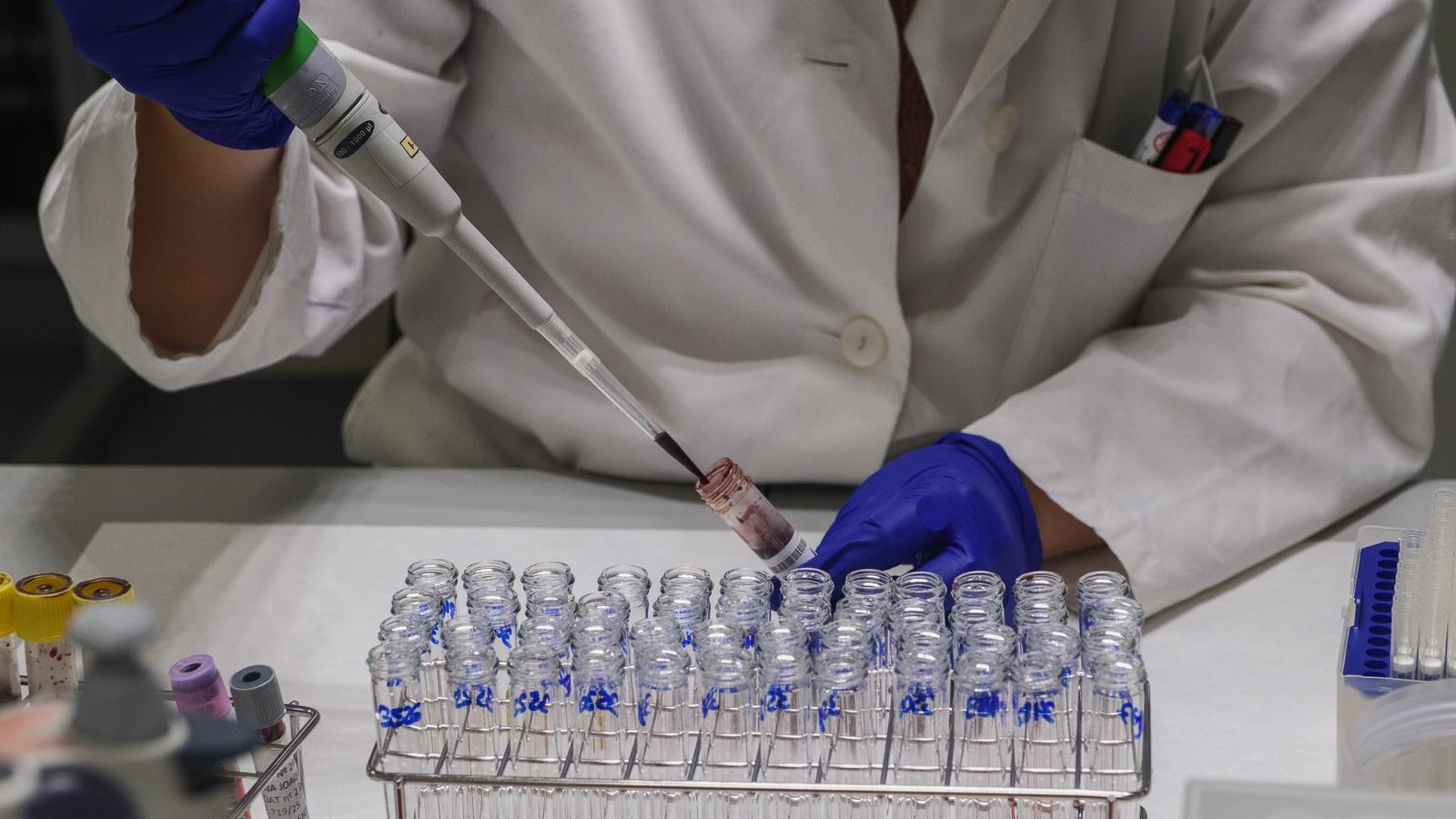A forensic expert on sexual violence in response to the rise in assaults
The Institute of Forensic Medicine also warns of an increase in victims of human trafficking networks.


BarcelonaThe water is filtered so many times that it ends up pure, so purified that it's no longer hydrating and isn't even good for drinking. The water that reaches the laboratories of the Institute of Legal Medicine and Forensic Sciences of Catalonia (IMLCFC), located in a basement of the City of Justice, is already cleaner than that of any home. Even so, it passes through two more filters before reaching the multimillion-dollar machine that analyzes the urine, blood, mucus, and liquid samples and tells you what substances are present. Cocaine, alcohol, caffeine, amphetamines. A chemist analyzes all the results, which in a few months will be key to solving a homicide, a sexual assault, or, simply, an accidental death. The environment is that of a laboratory: sterile and clean, but with many computers, test tubes, and microscopes. There are even showers in the middle of the offices to prevent contamination of the space.
The director of the IMLCFC, Eneko Barbería, explains that, beyond the cliché, forensic experts do much more than just autopsies. In fact, they perform more than 100,000 procedures each year, and dissections account for less than 5% of their work. Every day, for example, the Institute's specialists treat two victims of sexual violence. Typically, they are the ones who go to the hospital, where the victim is usually located, to collect toxicological and biological samples. The goal is to find traces of the aggressor in the victim or determine whether they have suffered chemical subjugation.
During the first six months of 2025, forensic experts have already performed 327 such procedures. The forecast is that the end of this year will again show the highest number in history. In 88% of cases, the victim is a woman, and three out of five were under 30 years old. Furthermore, 9% of these care sessions have been group sessions, a figure that has remained stable over the years. Given these data, the Institute has decided to place a forensic examiner on call exclusively dedicated to handling cases of sexual violence. Currently, there was one on call who handled everything. The number of shifts will be doubled.
"Care can be more immediate and more exclusive. It will be better for the victim's well-being," said Dr. Sara Milián, a forensic doctor. She emphasizes the importance of conducting the visit as soon as possible, and preferably without having washed or changed clothes, in order to find as many traces as possible. The new service has been serving victims in the Catalan capital and L'Hospitalet de Llobregat since last February and is based at the IMLCFC (National Institute of Trafficking in Persons), but the on-call forensic doctor travels to the hospital where the victim is being visited.
Human trafficking
Another growing conflict, closely linked to sexual violence, is human trafficking. Since 2022, the IMLCF has established a specific unit to treat it, the first in Spain. Since then, the number of victims has continued to grow: they have treated 98. Last year, there were nine people, and this year there are already 16. Dr. Elena Cano, also a forensic doctor at the institute, explains that they are usually young women who have been victims of sexual exploitation networks. A smaller proportion, though a smaller number, are transgender. Furthermore, they are often foreigners, children of other cultures, and with a language barrier. Hence, Cano said, the importance of a specific unit.
Lately, there is another element of concern: forced criminality. They are guards of marijuana plantations, mules who carry drugs in their intestines between two airports, and who are also part of human trafficking networks. "It's one of the biggest challenges," says Cano, who also adds the challenge of labor exploitation.
Another recently launched service is the new comprehensive forensic assessment unit. This is a multidisciplinary team that includes a forensic doctor, a psychologist, and a social worker who visit and assess victims of violent crimes, as well as their loved ones and attackers. In 2024, they assessed 368 cases, and since February of that year, some 900 interventions have already been carried out, as the number of cases they are involved in has multiplied.
Tissue Donation
That the work of forensic doctors goes far beyond autopsies is also demonstrated by the data on tissue donations. The IMLCF is now the fourth institution in Catalonia that gives the most, behind only the Bellvitge, Vall d'Hebron, and Clínic hospitals. The tissues that left the institute last year helped 16,000 people. This is always done with the family's permission and the forensic doctor's permission.
